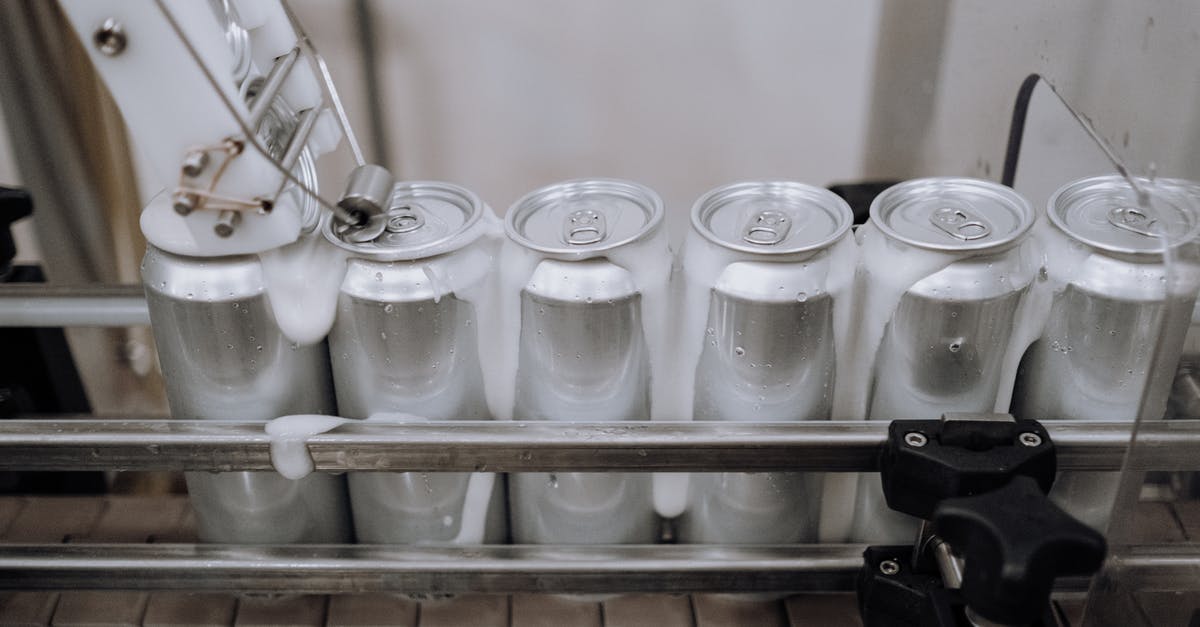How can I identify dutch process cocoa?

I have a hard time finding "dutch process cocoa" in the store sometimes.
- What other names might dutch process cocoa be known as?
- Is there something else in the ingredients that might identify dutch process cocoa.
What is the key property of dutch process cocoa that makes it do its job? (Especially in cake and brownie applications?)
Best Answer
There really isn't another name for Dutch processed cocoa. You could perhaps look at the ingredients or label and search for some reference to alkalization. Cocoa powder, Dutched or natural, consists of a single ingredient: cocoa. The difference is that Dutched cocoa has an extra step in the manufacturing process.
Normal cocoa powder is created from cocoa beans. These beans are fermented, roasted, shelled, and then ground into a paste known as chocolate liquor. This is roughly 50/50 cocoa butter (fat) and cocoa solids. At this step it is can be molded and sold as unsweetened baking chocolate. To make cocoa powder the liquor is hydraulically pressed to remove ~75% of the fat, and then pulverized into cocoa powder.
Dutched cocoa powder has an extra step before the shelled beans are ground into liquor. They are soaked in an alkaline solution of potassium carbonate.
Dutched cocoa was created in the 19th century by a Dutchman named Coenraad J. van Houten. Van Houten had invented the method of using a hydraulic press to defat chocolate liquor. Hot chocolate in these times would have a fatty greasy scum floating on the top of the beverage. Removing much of the fat prevented this. However, it also made the drink much harsher, acidic, and gave it a much lighter color.
Van Houten's idea was to counteract the cocoa's natural acidity (pH ~5.4) by soaking it in an alkaline solution. This neutralized the acids in the cocoa raising the pH to neutral (7) or higher depending on the duration of the soak. The higher pH also has the added benefit of darkening the cocoa; the higher it goes, the darker it gets.
Now, you might think that mellowing out the cocoa would be undesirable for the flavor. However this has been shown to not be the case. It turns out that the very acidic nature of natural cocoa can actually mask many of the natural undertones of flavor in the chocolate. Chocolate is much like wine and has hundreds of flavors that make up its flavor profile. These include sour, bitter, astringent, fruity, figgy, nutty, floral, smoky, and may more. Dutching only targets the bitter, astringent, sour and fruity undertones allowing the remaining ones to really showcase the chocolate.
There is a bit of misinformation that floats amongst bakers that the pH of the cocoa can affect the leavening of the baked good. Many recipes will actually sternly suggest using either Dutched or natural cocoa depending. This makes sense since leavening is a sort of balancing act that involves both acids and bases. However, it has been experimentally shown that this does not actually occur, and baked goods made with both Dutched and natural cocoa powder showed no differences in leavening.
So to actually address your questions. Again, no there isn't another name for Dutched cocoa, but it can't hurt to check for alkalized verbage. There is (should) also no additional ingredient that would identify a cocoa powder as Dutched. The key property it provides is simply chocolate flavor.
This answer is adapted from the Jan. 1, 2005 Cook's Illustrated review of cocoa powder. Their results showed that without fail Dutched cocoa was voted superior to natural cocoa in every single blind taste test including: pudding, shortbread, devil's food cake, and hot chocolate (which was masked by a sippy-top so reviewers could not see the tell-tale color).
If the cost doesn't make you do a double take (it's not really that expensive considering the quantity). I highly suggest you buy a 1 kg (2.2 lb) bag of Callebaut Cocoa Powder. This was the winner of the blind taste test performed by Cook's Illustrated. I must agree that it will change your baked goods for the better like you would not believe.
Pictures about "How can I identify dutch process cocoa?"



What brand of cocoa is not Dutch processed?
6 Ghirardelli If you're looking for a rich, deep chocolate flavor, try Ghirardelli's Unsweetened Cocoa Powder. It's rich in flavor, much like Hershey's unsweetened. It isn't Dutch-processed, so will be more acidic and slightly bitter, but I enjoy the flavor of this cocoa to use in many baking recipes.What is the difference between Dutch processed and natural cocoa powder?
In general, natural cocoa offers mild, light flavor (some call it \u201cold-fashioned chocolate flavor\u201d) while Dutch-process will give you a darker, more bittersweet experience. These days it seems like most people's taste tends to dark chocolate, and the darker the better.Natural Cocoa vs. Dutch Process Cocoa Powder EXPLAINED
More answers regarding how can I identify dutch process cocoa?
Answer 2
It's called "dutching" or "alkalinisation"
The cocoa (cacao in Dutch) beans are first roasted to remove the skins. The second roast and/or alkalinisation (using potassium carbonate) of the inner cocoa nibs is then ground to form the cocoa mass (liquor). The mass is then pressed to separate into 55% cake, and 45% fat (cocoa butter)
Some of the main Dutch companies that make Dutch cocoa are ADM, Cargill (Gerkens Cacao), ECOM (Dutch Cacao), Loos Cacao, Duyvis Wiener - they are mostly in Zaandam. Other countries also make Dutch process cocoa
The Netherlands process over 500,000 t of cocoa powder every year, about a third of the worlds supply. So if it's made in The Netherlands (Holland) it is most likely "Dutch Process"
Answer 3
Dutch Processed Cocoa is also called Alkalised cocoa powder. (in the cocoa I bought in UAE) You could check the pH value given on the package (although it may not be specified in all brands)
Answer 4
I do not know whether there is a difference in ingredients between natural and dutch cocoa, from what I've read I don't think so the difference occurs in the way its treated/processed.
The acid that natural occurs in cocoa has been neutralised in dutch cocoa meaning it has a mild flavour and is less bitter whereas natural cocoa has intense flavour and is very bitter. They also react differently to rising agents, Baking powder is used with dutch cocoa and baking soda with natural cocoa. For this reason you can't simply switch one type of cocoa for another in a recipe as it will not rise. This has to do with the way acids react with alkali.
Check this link out it explains the difference between natural and dutch cocoa in greater details and also has information on how to substitute natural cocoa into recipes calling for dutch cocoa. http://www.joyofbaking.com/cocoa.html
Hope this helps.
Answer 5
There are two types of unsweetened cocoa used in various chocolate recipes: natural cocoa and Dutch processed cocoa. Natural Cocoa is made from ground roasted cocoa nibs from which most of the cocoa butter have been extracted. It is naturally acidic with a pH of about 5.4 and is beige in color. Dutch processed cocoa is further treated with an alkalizing agent to neutralize its acidity and bring the pH to about 7 and has a rich, dark brown color.
Most American cocoas are natural and most European cocoas are Dutch processed.
Sources: Stack Exchange - This article follows the attribution requirements of Stack Exchange and is licensed under CC BY-SA 3.0.
Images: cottonbro, cottonbro, Anete Lusina, Anete Lusina
